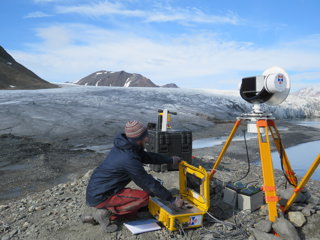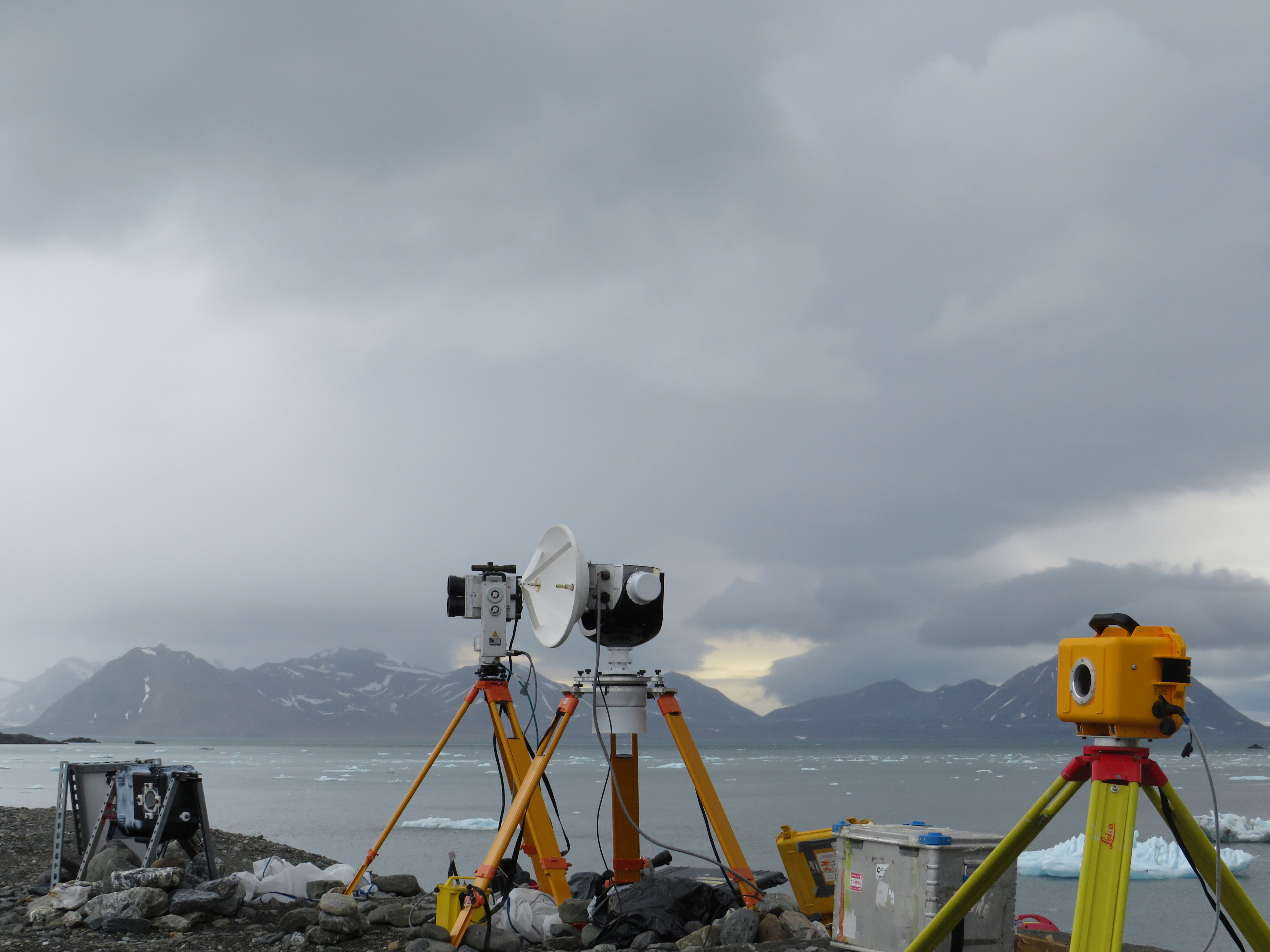The process of iceberg calving from tidewater glaciers is poorly understood due to a lack of high-resolution observations from glacier calving fronts. Will Harcourt, working alongside colleagues from Norway and Poland, aimed to improve this understanding using new remote sensing technology. We caught up with Will to find out more about his research and recent fieldwork.
What was the background and wider context of your research?
As a result of climate warming, glaciers around the world are retreating, releasing ice into the ocean and raising sea levels. These changes are felt most acutely in the Arctic where temperatures have increased at a faster rate than anywhere else on the planet. Our project aimed to understand the rate at which tidewater glaciers in Svalbard were losing mass by using state-of-the-art remote sensing instruments to monitor calving processes at Hansbreen.
What questions did you set out to answer and how?
Our core aim was to quantify the rate of calving at Hansbreen. To do this, we measured glacier calving activity using a novel millimetre-wave radar system (called AVTIS2) which allowed us to gather high spatial and temporal resolution measurements of the Hansbreen ice cliff in all weather conditions. We adopted a multisensory approach in which we also deployed a Terrestrial Laser Scanner (TLS) and a timelapse camera so that we could validate our radar measurements. This was the first time anyone had measured glacier calving activity using this array of sensors and allowed us to gain a unique insight into these complex processes.
What are your main findings to date?
An important result of this fieldwork is that we have been able to demonstrate the unique sensing capabilities of millimetre-wave radar for glacier monitoring and advance our technological capabilities for ground-based sensing of the cryosphere. In particular, we have been able to extract the 3D geometry of icebergs released from the Hansbreen ice front over the course of our study period which we are now using to quantify the rates and styles of calving at this tidewater glacier. These detailed observations will enable us to advance our understanding of the mass balance of tidewater glaciers in Svalbard and their response to climate warming.
What will be the main wider impact of your research?
Iceberg calving from tidewater glaciers is a dominant mass loss process globally and hence our unique observations will help us to understand this vital process in detail. In particular, our results will provide up-to-date estimates of glacier calving rates in Svalbard which will be used by organisations such as the Svalbard Integrated Arctic Earth Observing System (SIOS) to document the response of the Svalbard Earth system to climate warming. Finally, this project has enabled us to develop new remote sensing technology that we hope can be useful to researchers in both glaciology and many other fields of research.

Calving events reveal pristine, blue ice at Hansbreen, Svalbard.
Do you have a highlight from your fieldwork?
This was my first Arctic expedition and it was a truly life-changing experience. The first time I witnessed the imposing calving face of Hansbreen was a standout moment of the trip – the spectacular vertical ice cliff was coloured in pristine white and glistening blue, with icebergs swirling around beneath it. I had dreamt of seeing a calving glacier for many years and the support of the Royal Geographical Society (with IBG) made this lifelong dream a reality. It’s a moment I will never forget.
What will you take away from your fieldwork and how will you use this going forward? What’s next?
On a personal note, I proved to myself that I have the capabilities to lead and organise an Arctic field expedition. I am incredibly proud of my development as a leader as well as the achievements of our whole team, especially given the challenges of conducting fieldwork during a pandemic. We now have exciting plans to conduct a second field season in Svalbard, during which we plan to expand on the measurements taken in this trip in a different area of Svalbard so that we can understand regional differences in glacier dynamics.
Me and my team are embarking on this journey of research exploration to answer the big questions facing our natural environment – watch this space!

Will's research was supported by the Geographical Club Award and Dudley Stamp Memorial Award. Find out more about the full range of grants available to support students and researchers with their fieldwork.


